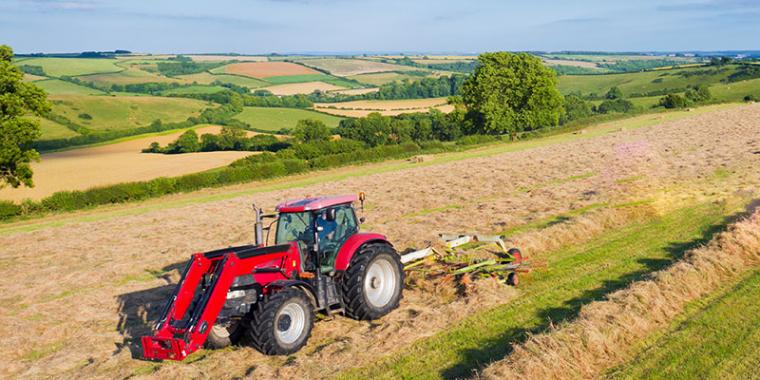Why ‘make hay while the sun shines’ is best for farm fire safety

You may be surprised to read that wet hay poses a higher fire risk than dry hay. If hay is put into a barn or stack when it is wet, the hay can spontaneously combust.
At what temperature can hay spontaneously combust?
If the temperature of a haystack rises above 55 degrees Celsius, a chemical reaction begins to produce a flammable gas that can ignite if the temperature gets high enough.
What’s the science behind it?
Hay bales or stacks with high moisture levels (more than 22 percent) can have chemical reactions that build heat. Hay has insulating properties – so the larger the haystack, the less cooling there is to offset the heat that is building.
Why are barn fires more likely at the moment?
Usually, hay is cut in summer during dry weather, and left to dry further before being made into bales to store in barns for animal food.
The recent showery weather has meant that farmers may not have found a dry period to make hay. Therefore, they may have been forced to cut and bale wet hay.
Hay fires are most likely within six weeks of baling. All hay above 15 percent moisture will heat up within three to seven days, but this generally does not get to dangerous levels. However, if the moisture content is higher, it can cause problems, both to the quality of the hay, and also the risk of spontaneous combustion and fire.
Advice for farmers making and storing hay
-
Remove hay from fields as soon as possible after harvesting. Ensure it is dry before storing.
-
Store hay and straw away from other buildings - especially those containing fuels or chemicals, and separate from livestock.
-
Store hay and straw in stacks at least 10 metres apart and ensure there is sufficient space between the top of the stack and electrical roof lighting.
-
Check hay regularly. If stored hay starts to smell of caramel, or there is a distinct musty smell, it is likely that your hay is heating. At this point, you’ll need to keep monitoring the hay’s temperature.
Read more about storing hay safely.
We also have more information about fire safety on the farm, including storing machinery safely, keeping livestock safe from fire, and planning escape routes.

